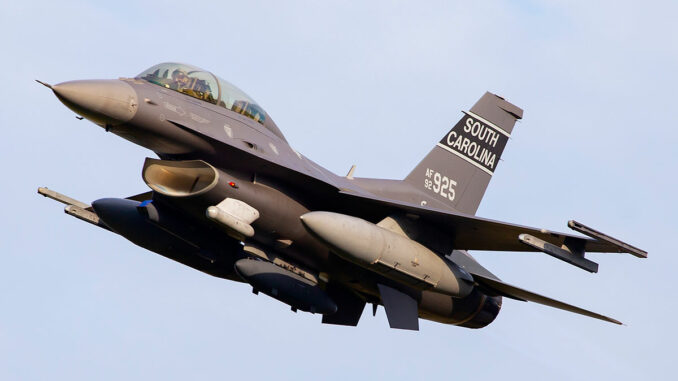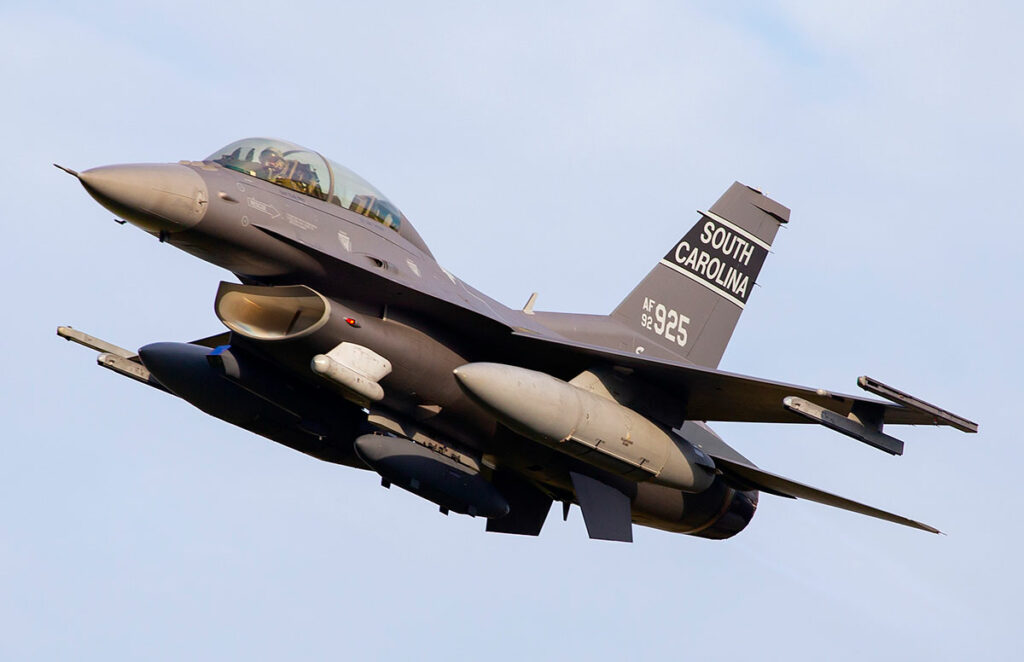
Ukraine, short of air equipment, is asking for more support from NATO, including F-16s and Patriot missiles to counter Russian threats.
Ukraine, equipped with 90 Soviet fighter jets, is struggling to maintain its fleet in the face of Russian attacks. Most of the aircraft are MiG-29s and Su-27s, which are old and difficult to maintain due to a lack of spare parts. To make up the shortfall, NATO countries have begun transferring American F-16s. However, Ukraine estimates that it needs at least 128 F-16s to effectively counter the Russian army. Air defense systems, such as Patriot batteries, have also played a key role, but missile stocks are dwindling. Logistics and personnel training are further challenges in maintaining these systems in working order.
The current situation of the Ukrainian air fleet
In 2023, Ukraine will have around 90 warplanes, including 45 MiG-29s, 25 Su-27s, 12 Su-24s and 16 Su-25s. These Soviet-era aircraft are essential to Ukrainian air defense, but keeping them in working order is becoming increasingly difficult. With Russia due to invade in 2022, several NATO countries have provided spare parts and equipment to help Ukraine keep these aircraft in service. However, this support is limited as spare parts for these models are scarce. Ukraine faces a constant threat: the lack of new aircraft and the scarcity of spare parts make the fleet vulnerable to critical breakdowns and malfunctions.
The MiG-29 and Su-27 fighters, developed in the 1970s, were among the most efficient in their day, but are now technologically outdated by the more recent models used by Russia. Maintaining them requires specific skills and parts that only a few countries are still able to supply. This underlines the importance for Ukraine of replacing these older aircraft with Western F-16s, multi-role fighters that are more modern and easier to maintain, thanks to logistical support from NATO.
The importance of F-16s for Ukrainian air defense
Ukraine has expressed the need for a fleet of at least 128 F-16s to resist Russian air attacks. The F-16 is a multi-role fighter developed by the USA, capable of air defense, ground attack and reconnaissance missions. Its versatility makes it an essential strategic asset for the Ukrainian army, which faces constant attacks on several fronts.
Due to the obsolescence of the MiG-29 and Su-27, Ukraine is relying increasingly on its ground-based air defenses. However, defense systems such as Patriot batteries are not always sufficient to counter Russian missiles and drones. The F-16s, on the other hand, offer active protection, capable of striking air targets before they reach their objective. Training pilots and technicians to maintain these aircraft is a major challenge. It will take at least 12 to 18 months to train enough qualified personnel to manage a fleet of F-16s, which underlines the importance of acting quickly to strengthen Ukraine’s air capability.

The role of Patriot systems in air defense
Patriot batteries, supplied by NATO countries, are one of the most effective weapons for protecting Ukraine against Russian ballistic missiles and supersonic cruise missiles. In addition to aircraft, Russia uses long-range missiles to strike strategic targets in Ukraine from across the border. These attacks include ballistic missiles and supersonic cruise missiles, which only the Patriot defense can effectively intercept.
However, the stock of Patriot missiles is limited. The USA and Germany have agreed to produce 1,000 new missiles, but full production will not be reached for several years. In the meantime, only a few hundred missiles will be available by next year. This poses a major logistical challenge: Ukraine needs to manage its resources carefully, while at the same time pursuing its defense efforts. The capacity of other European systems, such as SAMP/T or IRIS-T, is useful but insufficient to intercept the fastest missiles.
Logistical and human challenges: the key to success
Another major challenge for Ukraine is the lack of qualified personnel to maintain F-16s and air defense systems such as Patriots. Although the training of technicians is underway in NATO countries and in Ukraine, it will be some time before the number of qualified technicians is sufficient to guarantee regular maintenance of aircraft and systems. It will take at least a year to train a sufficient number of personnel, slowing down the full deployment of the new weapons.
This lack of qualified personnel highlights a crucial aspect of modern warfare: logistics. As the military adage goes, “amateurs study tactics, professionals study logistics”. Having advanced weapons like the F-16 and Patriot isn’t enough if the infrastructure to support them isn’t in place. This includes not only the technicians to maintain them, but also qualified pilots, equipped airbases and logistics networks capable of supplying spare parts.
Geopolitical and military implications
The war in Ukraine highlights the geopolitical implications of the production and supply of modern weapons. To maintain a balance in the region, NATO countries must not only supply weapons, but also ensure that Ukraine has the logistical means to use them. This process includes building new factories to produce Patriot missiles, providing ongoing training for Ukrainian forces, and supplying aircraft such as the F-16.
For its part, Russia also faces logistical constraints. Although economic sanctions have limited its ability to produce new aircraft and missiles, Russia continues to manufacture long-range missiles which it regularly uses against Ukraine. This shows that, despite sanctions, Russia remains capable of sustaining a protracted war with long-range attacks.
War Wings Daily is an independant magazine.